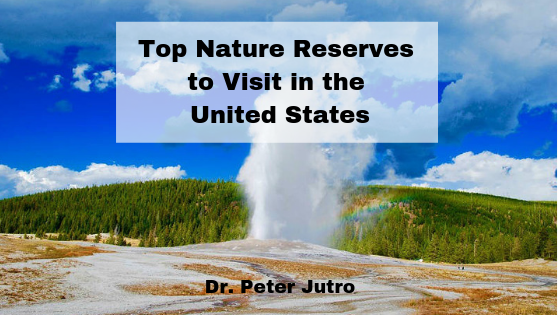Most people are unaware of the fact that a nature reserve or preserve can also be a national park. By definition, a nature reserve is land that is protected because it is home to particular fauna and/or flora. This land can be public or private, and national parks are of course public land. National parks remind us to take time to enjoy the beauty and wildlife around us. Each park has a unique ecosystem that may have evolved over thousands of years or more. These lands were protected in order to save them from development and other environmental hazards. Let’s take a look at some of the most interesting reserves to visit in the U.S.
1) Yellowstone National Park — This 2.2 million-acre expanse, the country’s first national park, has a history dating back thousands of years. The first humans to use the land were the Native Americans. In the 1800s, when Europeans explored western North America, they came across the Yellowstone area. The first organized expedition was in 1870, and it led to Yellowstone being established as a national park by President U.S. Grant in 1872. The park was managed by the U.S. Army from 1886 to 1918, when the National Park Service, created two years earlier under President Woodrow Wilson, assumed responsibility. The park is home to many well-known natural landmarks including Old Faithful, Yellowstone Canyon, and Mammoth Hot Springs as well as historic structures, such as the Lake Fish Hatchery. A more worrisome fact is that the park is located above a “supervolcano,” which is regularly monitored by scientists for signs of a possible eruption.
2) Pacific Remote Islands Marine National Monument — Made up of islands, reefs and atolls in the Pacific Ocean near the equator, it is, at almost half a million square miles, one of the world’s largest marine conservation areas. It is home to millions of birds and marine life, including the coconut crab, giant clams, Masked Boobies and White Terns. The monument was established in 2009 by President George W. Bush under the authority of the Antiquities Act of 1906, and was expanded in 2014 by President Barack Obama. Except for the Wake and Johnston Atolls, which are managed by the Department of Defense, the monument is managed by NOAA and the U.S. Fish and Wildlife Service.
3) Yosemite National Park –– An impressive park whose form was defined granite and glaciers, Yosemite was first established by President Lincoln in 1864 as a Public Trust of California, years before Yellowstone, the first “National Park.” Nearly 750,000 acres protect wildlife, waterfalls, meadows, giant sequoias, and more. Like Yellowstone, the history of the land goes back thousands of years with Native Americans as the first inhabitants. Prospectors descended on the park in the Gold Rush of 1849, and the California State Militia’s Mariposa Battalion drove out the Native American inhabitants to open it for prospecting and settlement. Through the urging of naturalist John Muir, Congress established Yosemite National Park in 1890, and additional areas were added to the park in 1906. Also, in 1918, it became the first park to have a female park ranger, Clare Marie Hodges.

